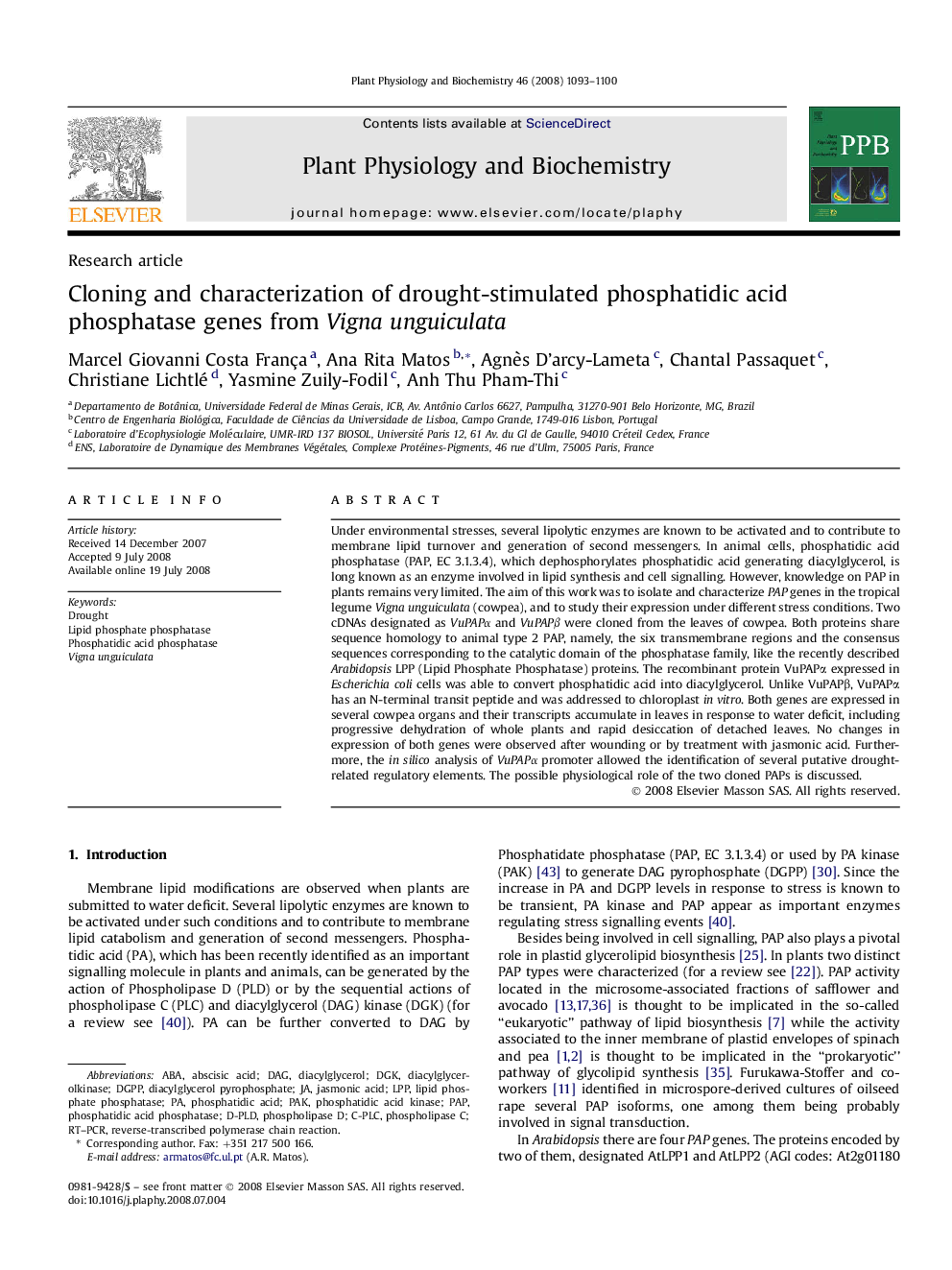| Article ID | Journal | Published Year | Pages | File Type |
|---|---|---|---|---|
| 2016795 | Plant Physiology and Biochemistry | 2008 | 8 Pages |
Abstract
Under environmental stresses, several lipolytic enzymes are known to be activated and to contribute to membrane lipid turnover and generation of second messengers. In animal cells, phosphatidic acid phosphatase (PAP, EC 3.1.3.4), which dephosphorylates phosphatidic acid generating diacylglycerol, is long known as an enzyme involved in lipid synthesis and cell signalling. However, knowledge on PAP in plants remains very limited. The aim of this work was to isolate and characterize PAP genes in the tropical legume Vigna unguiculata (cowpea), and to study their expression under different stress conditions. Two cDNAs designated as VuPAPα and VuPAPβ were cloned from the leaves of cowpea. Both proteins share sequence homology to animal type 2 PAP, namely, the six transmembrane regions and the consensus sequences corresponding to the catalytic domain of the phosphatase family, like the recently described Arabidopsis LPP (Lipid Phosphate Phosphatase) proteins. The recombinant protein VuPAPα expressed in Escherichia coli cells was able to convert phosphatidic acid into diacylglycerol. Unlike VuPAPβ, VuPAPα has an N-terminal transit peptide and was addressed to chloroplast in vitro. Both genes are expressed in several cowpea organs and their transcripts accumulate in leaves in response to water deficit, including progressive dehydration of whole plants and rapid desiccation of detached leaves. No changes in expression of both genes were observed after wounding or by treatment with jasmonic acid. Furthermore, the in silico analysis of VuPAPα promoter allowed the identification of several putative drought-related regulatory elements. The possible physiological role of the two cloned PAPs is discussed.
Keywords
Related Topics
Life Sciences
Agricultural and Biological Sciences
Plant Science
Authors
Marcel Giovanni Costa França, Ana Rita Matos, Agnès D'arcy-Lameta, Chantal Passaquet, Christiane Lichtlé, Yasmine Zuily-Fodil, Anh Thu Pham-Thi,
